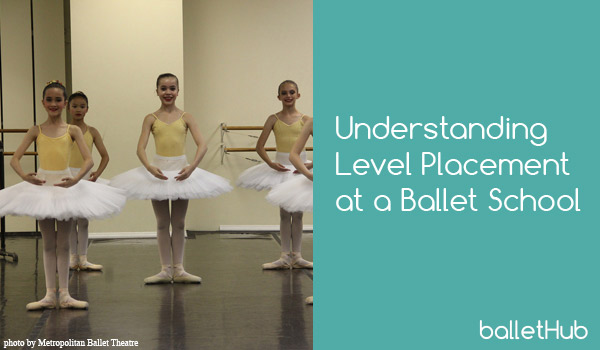Young dancers dream of the day they make their debut as the Sugar Plum Fairy or Cavalier in the Nutcracker and amaze audiences with their dazzling skill. The road to center stage is not an easy path however, and students must work their way up class by class. For students who are serious about their ballet training, level placement can be a touchy subject.
 Photo by: Metropolitan Ballet TheatreDancers want to progress quickly and can feel impatient when they are not advanced, so it is important to remember that it takes a long time to become good at ballet!
Photo by: Metropolitan Ballet TheatreDancers want to progress quickly and can feel impatient when they are not advanced, so it is important to remember that it takes a long time to become good at ballet!
Being asked to repeat a level can be frustrating, but it is almost always in the best interest of the dancer. Here are some valuable points to remember in your ballet study:
- The teacher is always acting in your best interest. Your teacher wants you to be successful, progress steadily and become the best you can be. There is a reason you were placed in a specific level, even if it is not the class you feel you should be in.
- Age. This can be a major factor, particularly for girls. In general no matter how talented the student is she will need to wait to begin pointe until the age of 11. Young girls who advance very quickly will not have the physical maturity to begin pointe work (starting pointe before the growth plates have closed can cause lasting physical injury and damage). This means that a young student who moves up in level quickly will then need to be held back because she is not physically ready for pointe. In the long run it is usually better for a student to stay with her age group until age 12; otherwise she may need to repeat a level multiple times until her body is physically ready for pointe work.
- Class leaders. Within every level there will be a variety of talent, or in other words weaker and stronger dancers within a class. At certain points in your training it is important to be both! Being the weakest in class can motivate a student to progress more quickly. However strength and repetition are crucial to developing a strong technique– it takes time to become an advanced dancer. Sometimes you can learn the most as the strongest dancer in the class and prove to your teachers and directors that you are deserving of opportunities/casting.
- Repetition. Even professional dancers go back to take school level/basic classes in order to fine tune their technique. It is impossible to be perfect at ballet- technique is a constant study. A dancer can never do too many pliés or tendus!
It is fairly common for students who have been asked to repeat a level to became quite discouraged. However in the end these students usually make steady and sure progress and end up on par with classmates who moved up earlier. Sometimes these students even end up doing better in the long run.
As a teacher it is a tough decision to hold a student back rather than promote him/her in level – it is usually because the student has not yet achieved a particular goal. This does not mean the student is not talented or gifted (sometimes the student has incredible potential actually).
The decision is always based on what the faculty feels the student needs to achieve… the student may be weak in just one particular area and once he/she corrects the problem can then advance very quickly.
 Photo by: Jennifer Zmuda
Photo by: Jennifer Zmuda
There is always something you can learn in ballet, even at the lowest level. A good teacher will help you progress no matter the class. Be open to corrections and pointers even if you are not in the class you’d like to be in. The best students are frequently those who can absorb information and apply it in their dancing. In the end if you are concerned about your class placement ask to meet with your teacher- being informed is never a mistake!

